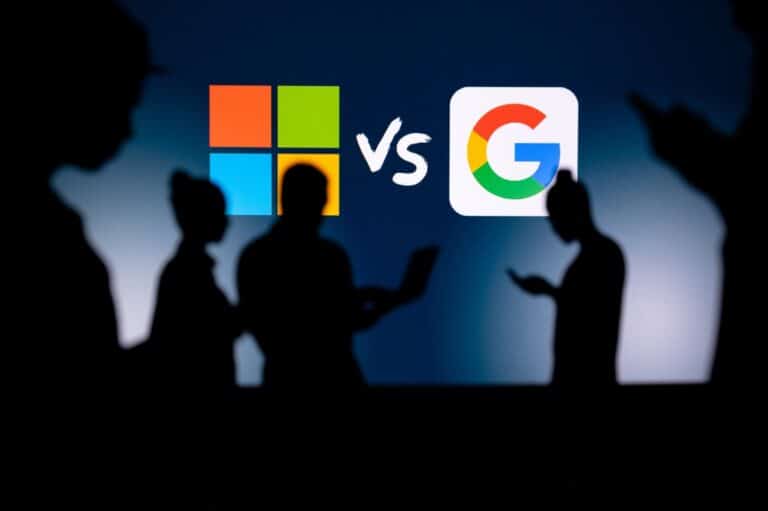Microsoft and Google parent company Alphabet presented their quarterly figures recently. The results are positive in both cases, with cloud revenue being a particular strong point. Earnings from Azure and Google Cloud increased by 31 percent and 28 percent, respectively.
The most striking feat comes from Alphabet. For the first time in its history, the company is paying a dividend to shareholders. That yield is 20 cents per share and is accompanied by a 70 billion share buyback. In addition, Alphabet performed above expectations this quarter by generating revenue of $67.6 billion; analysts had forecast 66.1 billion.
That revenue is somewhat comparable to Microsoft’s figure this last quarter: 61.9 billion. That number also exceeds financial analysts’ expectations, who predicted 60.9 billion.
Competitor AWS will present its quarterly results on April 30.
AI, AI, AI
Both Azure and Google Cloud are driving the two hyperscalers’ positive numbers. Microsoft CFO Amy Hood told Bloomberg that “healthy growth” can be seen in both non-AI and AI services. She admitted that AI marketing is still in its infancy, but “we feel good about where we are.” Customer adoption is showing positive signs, Hood said.
Google also highlights AI’s opportunities for cloud customers. CFO Ruth Porat notes that AI solutions are making an “increasing contribution” to overall revenue.
Both parties have a comprehensive suite of services. For many organizations, buying the Microsoft or Google suite is more attractive than picking specific solutions. AI reinforces the importance of the mutual integration of apps like Teams/Google Chat and other business solutions.
Tip: Google Chat must compete with Slack and Teams
Not just winners
Alphabet and Google were not the only parties to present their quarterly results. Meta saw revenue increase by 27 percent compared to the same quarter a year ago. Still, the company disappointed investors by coming up with frugal forecasts for the second quarter. CEO Mark Zuckerberg then came out with a reality check for AI. Namely, it will require development and investment for some time yet before the technology becomes profitable (for Meta). Its latest AI model, Llama 3, is offered free and open-source.
Read also: Meta unveils powerful open-source model Llama 3 and chatbot Meta AI
It led to a sharp drop in Meta’s share price, a development that shows that entering the AI race is not enough to satisfy investors. Intel had to do the same despite growth in all segments. It is considered Nvidia’s challenger in data center GPUs along with AMD, while its hopes are boosted by the fact that the PC market is finally picking up after two poor years. Hopes are pinned on the AI PC, which should drive broader user adoption of AI. For now, customers seem mostly concerned with AI capabilities in the cloud, not locally.
